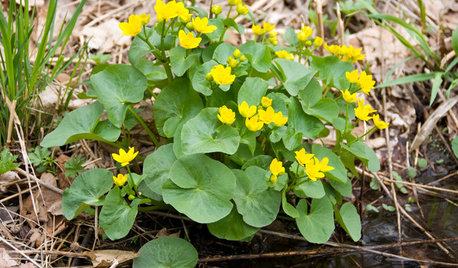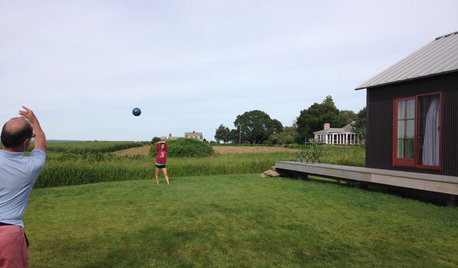Marsh marigolds taking over!
annld
19 years ago
Related Stories

EDIBLE GARDENSTake Refuge in an Iced Tea Garden
Cultivate the fine art of lounging in the shade and sipping a cold beverage
Full Story
SUMMER GARDENINGPhoto Gallery: Summer Gardens Take a Bow
Home gardeners amazed us with photos of their flower beds, sheds and outdoor rooms. Take a look and get ideas for fall planting time
Full Story
NATIVE PLANTSGreat Design Plant: Caltha Palustris Is a Welcome Sign of Spring
Brighten your rain garden or pond edge in spring with marsh marigold
Full Story
VACATION HOMESHouzz Tour: Shipshape Cabins Float Between the Woods and the Coast
A Massachusetts vacation property takes its cues from the trees, marshes, meadow, ocean and farm buildings all around it
Full Story
WINTER GARDENINGNew Year, New Landscape — What to Do in Your January Garden
Whether you've resolved to make over your garden or just enjoy it more, these tasks can help
Full Story
HOUZZ TOURSHouzz Tour: Easygoing Vacation Home on Kiawah Island
Tossing overly styled and fussy for laid back and family friendly, a designer bucks the trend in an affluent South Carolina community
Full Story
DESIGNER SHOWCASESGlamour Ahead: Get In on the 2013 San Francisco Decorator Showcase
Take an inspiring virtual tour of 20 luxurious spaces in a Georgian mansion that push design and decorating drama to the max
Full Story
PLANTING IDEASWant a More Colorful, Natural Garden? Try a Perennial Meadow
Spend less time tending and more time taking in the sights by improving on Victorian and prairie garden designs
Full Story
FARM YOUR YARD6 Things to Know Before You Start Growing Your Own Food
It takes time and practice, but growing edibles in the suburbs or city is possible with smart prep and patience
Full Story
HOUZZ TOURSMy Houzz: A Surprisingly Light Lakeside Log Cabin
Light gray paint and lots of natural light take this cabin on a Michigan lake out of moody country
Full StorySponsored






caliloo
caliloo
Related Professionals
Windham Landscape Architects & Landscape Designers · Alamo Landscape Contractors · Huntington Landscape Contractors · South Lake Tahoe Landscape Contractors · North Aurora Landscape Contractors · Palos Heights Landscape Contractors · Carol Stream Carpenters · St. Johns Carpenters · Arbutus Decks, Patios & Outdoor Enclosures · Carmel Decks, Patios & Outdoor Enclosures · Rancho Palos Verdes Decks, Patios & Outdoor Enclosures · Rogers Decks, Patios & Outdoor Enclosures · Highland Decks, Patios & Outdoor Enclosures · Overland Park Siding & Exteriors · Rochester Siding & ExteriorsannldOriginal Author
jenny_in_se_pa